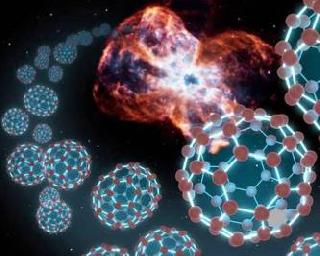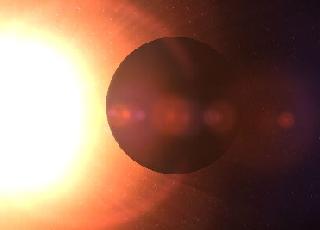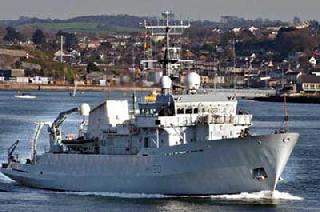
This artist's impression illustrates fullerenes being formed in a planetary nebula, and drifting out into the interstellar medium. Photo: NASA / JPL-Caltech / T. Pyle (SSC) / ESA/K. Noll (STScI).
LONDON (BNS): Astronomers have found tiny balls of carbon molecules known as ‘buckyballs’ in space, a media report said.
The soccer shaped balls found in the Nebula around a distant white dwarf star are the largest molecules known to exist in space.
The buckyballs which are apparently made in chemistry labs, where first found in 1985. These carbon molecules are made by vaporising graphite in the presence of Helium.
"As soon as they were discovered in the lab it was actually suggested that they would be very good candidates to be found in space," Space.com has quoted astronomer Jan Cami of the University of Western Ontario, who led the new study, as saying.
Earlier, researchers had searched for buckyballs in the gas and dust between and around stars, but the evidence was inconclusive.
Astronomers used the Spitzer Space Telescope to find the buckyballs, known as C60 because they are made of 60 carbon atoms each.
According to the study, the buckyballs are about 1 nanometer in size, about three times larger than water molecules, which are about 0.3 nanometers in size and consist of three atoms (one oxygen atom and two hydrogen atoms). One nanometer is a billionth of a meter, or about one ten-thousandth the diameter of a human hair.
“C60 and a closely related molecule called C70, made of 70 carbon atoms. Both C60 and C70 belong to a class of molecules termed buckminsterfullerenes, or just fullerenes, after architect Buckminster Fuller,” Cami added.
The carbon molecules were found around the planetary nebula Tc-1, which are about 6,500 light-years away in the southern constellation Ara.
Despite their name, planetary nebulas are actually clouds of gas around stars, not planets, the researchers reported.
 Previous Article
Previous Article Next Article
Next Article












The Indian Air Force, in its flight trials evaluation report submitted before the Defence Ministry l..
view articleAn insight into the Medium Multi-Role Combat Aircraft competition...
view articleSky enthusiasts can now spot the International Space Station (ISS) commanded by Indian-American astr..
view article